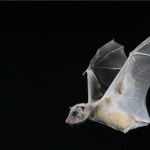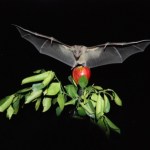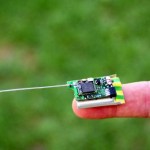Nachum Ulanovsky
Not everyone gets their research written about by this week’s Nobel Prize winners:
All mammals face the challenge of navigating in complex, three-dimensional (3D) environments, whether they are swinging from branch-to-branch in forests or burrowing underground tunnels. How does the brain maintain a sense of place and direction in 3D? In a beautiful study published on Nature's website today, Finkelstein et al. report that bats have an internal neural compass that tracks direction in 3D during both surface locomotion and flight.
That’s from Prof. May-Britt Moser in Nature’s “News and Views.”…
When we navigate through our environment, do we track mostly in two dimensions or in three? Clearly, we can move in all three dimensions, but does our internal map relate to the vertical direction in the same way as it does to the horizontal axes on the ground?
That question has not yet been definitively answered, but recent research on flying bats shows us what three-dimensional navigation looks like in the brain.
It turns out that fruit bats also mostly navigate in two dimensions, since quite a bit of their flying time involves getting from their caves straight to their favorite fruit…
This week's new Weizmann science stories are on ants and bats. Two different models for investigating human behavior? Yes, but not exactly in the ways you might imagine, and so much more than that.
Dr. Ofer Feinerman, the "ant scientist," is a new member of the Physics Faculty. In his graduate research under Prof. Elisha Moses in the Physics of Complex Systems Department, Feinerman created artificial circuits out of neurons. Now he has turned to investigating the complexities of ant societies. What, you might ask, do neurons and ant colonies have to do with physics? The answer is: They…
Dr. Nachum Ulanovsky of the Weizmann Institute and Prof. Ran Nathan and Asaf Tsoar of the Hebrew University of Jerusalem have captured live fruit bats and glued tiny GPS transmitters to their backs, then driven the bats overnight to a site some 80 kilometers away and rappelled into the bats' caves to retrieve the transmitters after they fall off - all in the name of scientific research. In the process, the team has revealed how these bats form mental maps that they use to return to their favorite fruit trees night after night, often flying large distances and bypassing other, similar trees on…
Bats may be using an innate understanding of physics to track their prey in the dark. Institute neurobiologists trained Egyptian fruit bats to fly to food in a dark lab. They found that in some situations the bats sweep their sonar to either side, catching their "prey" on the beam's slope, while at other times they point their beams head-on. Some physical calculations showed that the changes in intensity near the slope help in getting a fix on the target's direction - a very efficient strategy for localizing targets - while the direct beam is preferable for discerning a hard-to-identify…


